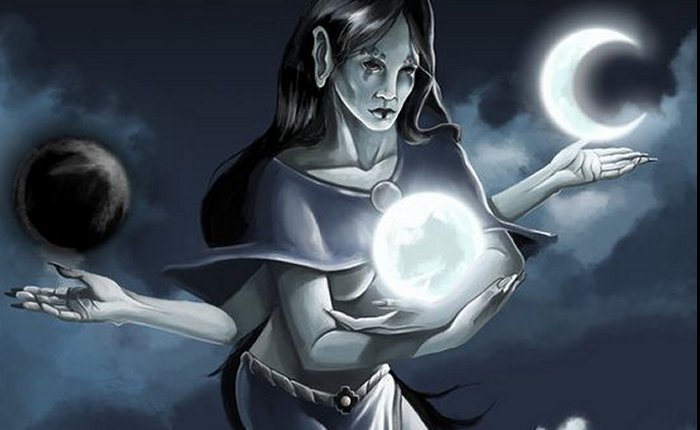Mama Quilla – Incan Moon Goddess Of Marriage And Fertility Assisted By High Priestesses Of Qoricancha
A. Sutherland – AncientPages.com - We have already acquainted us with Mama Ocllo and Mama Cocha, two great mama divinities revered in ancient beliefs of Inca people.
Apart from these two deities, there is also Mama Quilla (Mama-Kilya), who was the wife of the sun god Inti (Inti was also the second husband of his mother, Pachamama the Earth goddess).
Mama Quilla was the Inca goddess of marriage and fertility, seasons of the harvests, and a highly revered deity who represented women. Image source
She played a significant role as the Mother of the Moon, whose phases revealed the course of time, and the waxing and waning of the Moon were used to calculate monthly cycles, from which the periods for Inca celebrations were fixed.
The Inca people calculated and predicted the course of time and its calendar. Many of their rituals and cultural traditions depended on the lunar calendar, and these celebrations had to be adjusted and coincide with the well-known solar year.
According to the Inca worldview, the Moon was an expression of the divine feminine, magic, emotions, intuition, and also of death and rebirth as it always waxes and wanes every month.
Mama Quilla was the Inca goddess of marriage and fertility, seasons of the harvests, and a highly revered deity who represented women.
She was considered the daughter of Viracocha and Mama Cocha, and Mother of Manco Capac and Mama Ocllo, legendary founders of the Inca Empire and its culture. Among the deities of the heavenly pantheon, Quilla had an equal ranking as her husband, the Sun god, Inti. Quilla accompanies Inti in the same rank in the divine pantheon.
She had four children: Manco Cápac, Mama Ocllo, the Pachacamac, the earth creator god, and god of rain and the South wind, Kon.
Protector Of Women In The Universe
She was the goddess of marriage, the menstrual cycle, feast days, the Inca calendar, and a defender of women.
Therefore, she had many faithful followers who relied on her. No other deity could better understand the women’s desires and fears, and give them the protection sought.
As an essential part of Inca mythology, there was a holiday that usually coincided with the beginning of the rainy season - spring equinox, which was called Quillamama Raymi (or Coya Raymi). Its tradition was traditionally preserved in indigenous communities.
Strange, Metallic Sound Of Priestesses’ Earrings
During the night and in the atmosphere of great silence, women performed all kinds of rituals in Mama Quilla’s name. Mama Quilla was usually depicted as a human female, and images of the goddess included a silver disc covering an entire wall. Her sacred place was located in Qoricancha, Cusco, Peru, and it was the most important shrine in the Inca Empire.
It was illuminated with torches and decorated with sheets of beaten silver and served by its priestesses. The Inca believed that both silver plates and other objects made of this metal attracted the attention of the Moon.
The cult of Mama Quilla was celebrated entirely by women. The priestesses of the Moon – dressed in long gray robes and cloaks covered their head with a thick white wool cap; they wore silver earrings, which released a strange, metallic sound that warned of their presence to men, who were not allowed to look at them.
The priestesses originated from the female elite of Cusco.
Old Tradition Of Coya Raymi Celebration
Coya Raymi Celebration was usually organized once a year in the tenth month of the Inca Coya Raymi calendar (September). During this important holiday, the Moon was worshiped with prayers and small gifts, and it was also necessary to fast during the celebrations.
According to the Inca religion and tradition, the month of September is dedicated to fertility in Andean cultures and is the beginning of the ceremonial agricultural year.
On September 21, Coya Raymi pays tribute to women and fertility and also symbolizes the first step to obtain the fruits of the Earth. It is a particularly important celebration time for all young Inca women because from a young age girls have to prepare for their adult life.
It is to her that Andean women directed their questions about protection for girls, parturient women, and newborn babies.
Written by – A. Sutherland - AncientPages.com Senior Staff Writer
Copyright © AncientPages.com All rights reserved. This material may not be published, broadcast, rewritten or redistributed in whole or part without the express written permission of AncientPages.com
More From Ancient Pages
-
 Chester Stash Could Have Been Savings Hidden In An Iron-Glazed Mug
Archaeology | Oct 13, 2015
Chester Stash Could Have Been Savings Hidden In An Iron-Glazed Mug
Archaeology | Oct 13, 2015 -
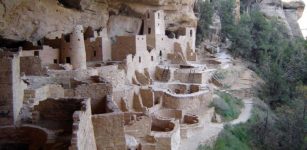 Sophisticated Masonry In Anasazi Dwelling Ruins At Mesa Verde National Park, Colorado, USA
Civilizations | Aug 11, 2015
Sophisticated Masonry In Anasazi Dwelling Ruins At Mesa Verde National Park, Colorado, USA
Civilizations | Aug 11, 2015 -
 ‘Curious’ Creature With No Anus Is Not Earliest Human Ancestor – Relieved Scientists Discover
Archaeology | Aug 18, 2022
‘Curious’ Creature With No Anus Is Not Earliest Human Ancestor – Relieved Scientists Discover
Archaeology | Aug 18, 2022 -
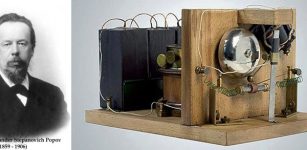 On This Day In History: First Wireless Transmission Of Morse Signals Sent – On Mar 12, 1896
News | Mar 12, 2017
On This Day In History: First Wireless Transmission Of Morse Signals Sent – On Mar 12, 1896
News | Mar 12, 2017 -
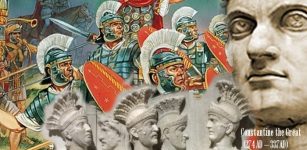 Praetorian Guard: Roman Elite Unit Assigned To Protect But Also Involved In Confinement, Execution, Spying And Threats
Featured Stories | May 26, 2018
Praetorian Guard: Roman Elite Unit Assigned To Protect But Also Involved In Confinement, Execution, Spying And Threats
Featured Stories | May 26, 2018 -
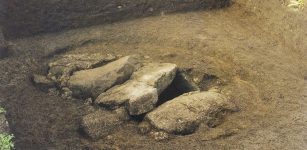 Mystery Of The 2,000-Year-Old Grave On The Isles Of Scilly Solved!
Archaeology | Jul 28, 2023
Mystery Of The 2,000-Year-Old Grave On The Isles Of Scilly Solved!
Archaeology | Jul 28, 2023 -
 8 Billion People: How Different The World Would Look If Neanderthals Had Prevailed
Featured Stories | Nov 18, 2022
8 Billion People: How Different The World Would Look If Neanderthals Had Prevailed
Featured Stories | Nov 18, 2022 -
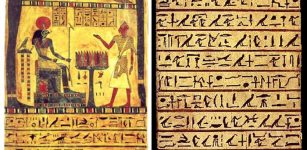 Strange History Of Stele Of Ankh-ef-en-Khonsu – ‘Stele Of Revealing’ Gave Birth To Thelema, A New Religion
Artifacts | Apr 3, 2018
Strange History Of Stele Of Ankh-ef-en-Khonsu – ‘Stele Of Revealing’ Gave Birth To Thelema, A New Religion
Artifacts | Apr 3, 2018 -
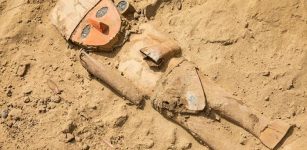 Ancient Wooden Sculpture Unearthed In Peru’s Chan Chan
Archaeology | Jul 12, 2022
Ancient Wooden Sculpture Unearthed In Peru’s Chan Chan
Archaeology | Jul 12, 2022 -
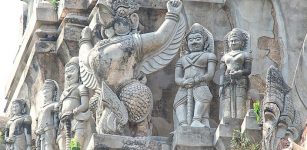 Sacred Bird Garuda And Stealing Of Amrita Drink Of Immortality From The Gods
Featured Stories | Jun 5, 2019
Sacred Bird Garuda And Stealing Of Amrita Drink Of Immortality From The Gods
Featured Stories | Jun 5, 2019 -
 Mythical Fiery Bird Phoenix In Mythologies Of Many Ancient Cultures
Featured Stories | Mar 23, 2017
Mythical Fiery Bird Phoenix In Mythologies Of Many Ancient Cultures
Featured Stories | Mar 23, 2017 -
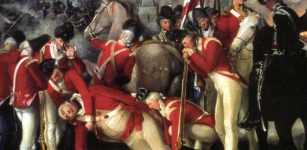 On This Day In History: Irish Rebellion Led By The United Irishmen Against British Rule Begins – On May 24, 1798
News | May 24, 2016
On This Day In History: Irish Rebellion Led By The United Irishmen Against British Rule Begins – On May 24, 1798
News | May 24, 2016 -
 Mythical Stymphalian Birds: Terrible Winged Maidens With Birds’ Feet
Featured Stories | Feb 27, 2017
Mythical Stymphalian Birds: Terrible Winged Maidens With Birds’ Feet
Featured Stories | Feb 27, 2017 -
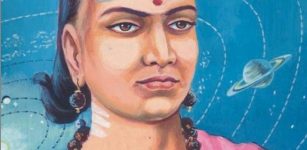 Varahamihira: Indian Sage And One Of The Greatest Minds Of All Time
Featured Stories | Sep 13, 2016
Varahamihira: Indian Sage And One Of The Greatest Minds Of All Time
Featured Stories | Sep 13, 2016 -
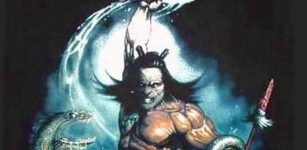 Tangaroa – Polynesian God Of Ocean And Fish In Constant Struggle With His Brother
Myths & Legends | Jun 2, 2020
Tangaroa – Polynesian God Of Ocean And Fish In Constant Struggle With His Brother
Myths & Legends | Jun 2, 2020 -
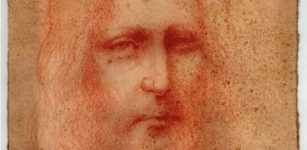 Unknown Sketch Of Jesus Christ By Leonardo Da Vinci Could Be The Holy Grail Of Art
News | Nov 24, 2020
Unknown Sketch Of Jesus Christ By Leonardo Da Vinci Could Be The Holy Grail Of Art
News | Nov 24, 2020 -
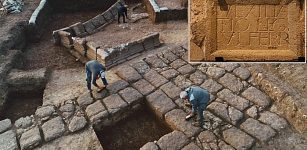 1,800-Year-Old Legio VI Ferrata Military Camp Uncovered In Israel
Archaeology | Feb 21, 2024
1,800-Year-Old Legio VI Ferrata Military Camp Uncovered In Israel
Archaeology | Feb 21, 2024 -
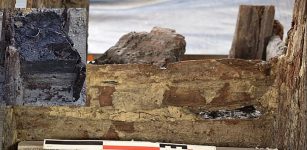 Czech Neolithic Well Is Oldest Wooden Structure In The World
Archaeology | Mar 11, 2020
Czech Neolithic Well Is Oldest Wooden Structure In The World
Archaeology | Mar 11, 2020 -
 Cinnabar And Hematite Were Used In Early Teotihuacan Murals – INAH Researchers Say
Archaeology | Aug 5, 2020
Cinnabar And Hematite Were Used In Early Teotihuacan Murals – INAH Researchers Say
Archaeology | Aug 5, 2020 -
 Unorthodox Ancient ‘Out-Of-This World’ Carvings Were Found And Destroyed – Discovery – Part 1
Featured Stories | Aug 10, 2020
Unorthodox Ancient ‘Out-Of-This World’ Carvings Were Found And Destroyed – Discovery – Part 1
Featured Stories | Aug 10, 2020

